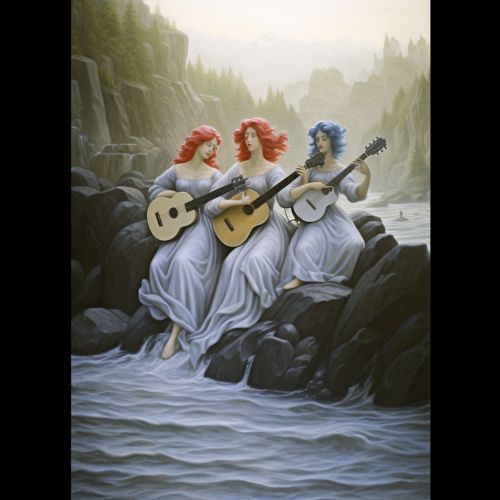Sirens
Origins and Mythology
In Greek mythology, the Sirens were dangerous creatures, who lured nearby sailors with their enchanting music and singing voices to shipwreck on the rocky coast of their island. They were believed to be the daughters of the river god Achelous, and a Muse, either Melpomene, Terpsichore, or Calliope. The number of Sirens varies in different accounts, but the most common number is three: Aglaopheme, Peisinoe, and Thelxiepeia.


Physical Description
The Sirens were often depicted as women with the legs of birds, with or without wings, playing a variety of musical instruments, especially harps. The tenth-century Byzantine encyclopedia Suda says that from their chests up, Sirens had the form of sparrows, below they were women, or, alternatively, that they were little birds with women's faces. Later Sirens were sometimes depicted as beautiful women, whose bodies, not only their voices, are seductive.
Role in Literature
The Sirens appear in many ancient Greek stories and epics, including the Odyssey by Homer. In the Odyssey, the hero Odysseus is warned about the Sirens by the sorceress Circe. He is curious as to what the Sirens sing to him, and so, on Circe's advice, he has all of his sailors plug their ears with beeswax and tie him to the mast. He orders his men to leave him tied tightly to the mast, no matter how much he might beg. When he hears their beautiful song, he orders the sailors to untie him but they ignore him. When they have passed out of earshot, Odysseus demonstrates with his frowns to be released.
Sirens in Modern Culture
The concept of the Siren has been used extensively in modern culture, particularly in literature and film. They are often depicted as beautiful and dangerous women who use their allure to deceive men. This portrayal has been criticized for perpetuating harmful stereotypes about women as deceptive and manipulative. However, some modern interpretations have sought to reclaim the Siren as a symbol of female empowerment, emphasizing their independence and power.
